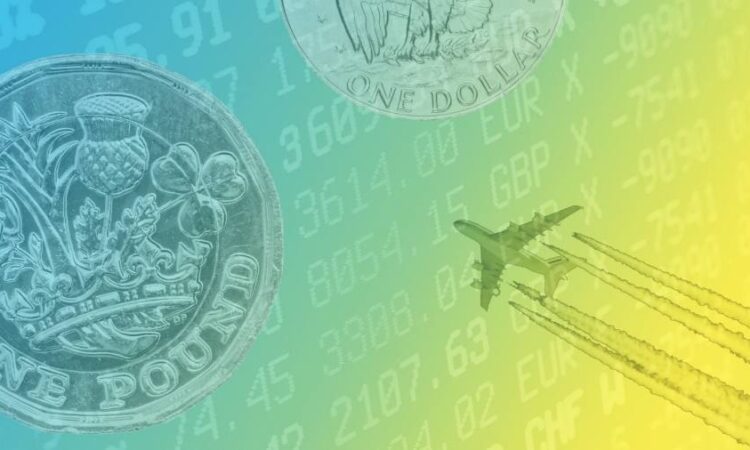
Long ago I owned 5 per cent of Qantas. Not me personally — its shares weren’t that cheap. On behalf of clients. You’re insane, everyone said. Never buy airlines. But I was 28 and annoyingly contrarian.
Being a large shareholder is terrifying. So I built a valuation model the size of a Boeing 777 with as many moving parts. Each seat had its own cell reference. I had a spreadsheet on rivets.
It soon became clear, however, that only the oil price and US dollar really mattered. The former as a major input cost; the latter because jet fuel is priced in greenbacks, as were many line items.
Were two variables easier? Nope. I hadn’t the foggiest where oil was heading (like the experts surprised by Opec’s cut in production this week), let alone currencies. But neither did Qantas. Which is why it sometimes hedged.
So not only did I have to guesstimate fuel costs and exchange rates, but also whether the airline had hedged them, the amounts, and at what prices. No chance. Thank goodness Virgin’s shock entry into Australia gave me an excuse to sell my stake.
My investment lesson was this. Some things are as important as they are unfathomable. Kind of like space-time, or the opposite sex. The harder you ponder the more mysterious they become.
Currencies are the worst. Valuing assets in a closed economy is hard enough. Add global exchange rates and the permutations are mind boggling. Long ago, therefore, I decided to ignore forex and head to the pub.
Now I feel remiss, as most emails I receive are about currencies. Readers want to know if they should own a favourite fund in dollars, euros, sterling or soles. Whether to hedge is another commonly asked question.
Clearly, lots of us are bamboozled by too many products, each in myriad base currencies — as well as hedged or unhedged versions. Which to choose? Let me explain my thinking on this and I hope you will end up joining me for a pint.
It’s easiest to begin from the bottom up. A typical company found in popular investment funds will flog its wares in many countries around the world. It also has expenses in multiple denominations.
Like Qantas, it may hedge. Contracts are written in a mix of local currencies and dollars, some lasting years, others shorter term. Financing is often cross-border too, as is working capital. How on earth, therefore, do we have a hope of understanding the so-called transactional effects of currency moves?
For example, the influence of exchange rates on end prices. Or the incomes of customers. What about costs borne or passed on by suppliers? Thousands of moving parts, all of which influence supply and demand and pricing. Multiply this across every market a company operates in.
Simpler to calculate are translation effects — converting one currency into another when reporting. Indeed some companies reveal how their earnings are affected on this basis (usually when negatively so). But this is no help to investors either. We still have to forecast exchange rates in order to model future cash flows, no matter how they are translated.
These issues apply to every holding in my portfolio — from Belgium to Japan. In aggregate, therefore, when I read that sterling has reached a 10-month high versus the dollar, I really have no clue whether that’s good or bad.
Currency moves eventually come out in the wash, of course. You can back test your funds to see how they perform. I’ve written about the correlation between UK stocks and the pound in a previous column. But historical relationships break down.
Over the short run, however, you might expect a rising pound, say, to damp the return of my sterling-denominated S&P 500 ETF, versus the dollar version. And it has, by a whopping 10 per cent over the past six months. Ouch.
It’s swings and roundabouts though: over a decade the difference is less than 300 basis points. And has a weak dollar of late made this ETF more attractive from a valuation perspective? Almost impossible to say.
If companies are a black box when it comes to how exchange rates mess with returns, funds are no less opaque. In the prospectus which accompanies my S&P 500 ETF, there are 600 references to currencies.
ETFs come in various base currencies (the one used when calculating the daily net asset value) as well as subscription currencies (the price you see). For example, the base currency for my S&P 500 ETF is dollars and I own a sterling version.
If you’ve purchased a global, euro or Asian fund, however, the securities therein come in many different currencies as well. That’s a lot of moving parts. Finally, managers may offer hedged and unhedged versions.
Hence the use of derivatives to protect against currency fluctuations. These can be employed at the portfolio level or “for the purposes of hedging the currency exposure of the underlying securities”. Who pays for these instruments? You do, out of performance.
Sometimes the cost of hedging is so expensive it exceeds the exposure risk. This can occur when everyone has the same view on a currency — always a danger sign in my view. That’s why I don’t own ETFs that are hedged, preferring to reduce my currency risk via geographic diversification.
Why are all my funds denominated in pounds then? It just makes monitoring them easier. There is nothing wrong with running with a mixed bag of base currencies, but with four kids under 10, I know my liabilities will be in sterling for decades to come — and they’re always stealing my calculator.
The author is a former portfolio manager. Email:stuart.kirk@ft.com; Twitter:@stuartkirk__



